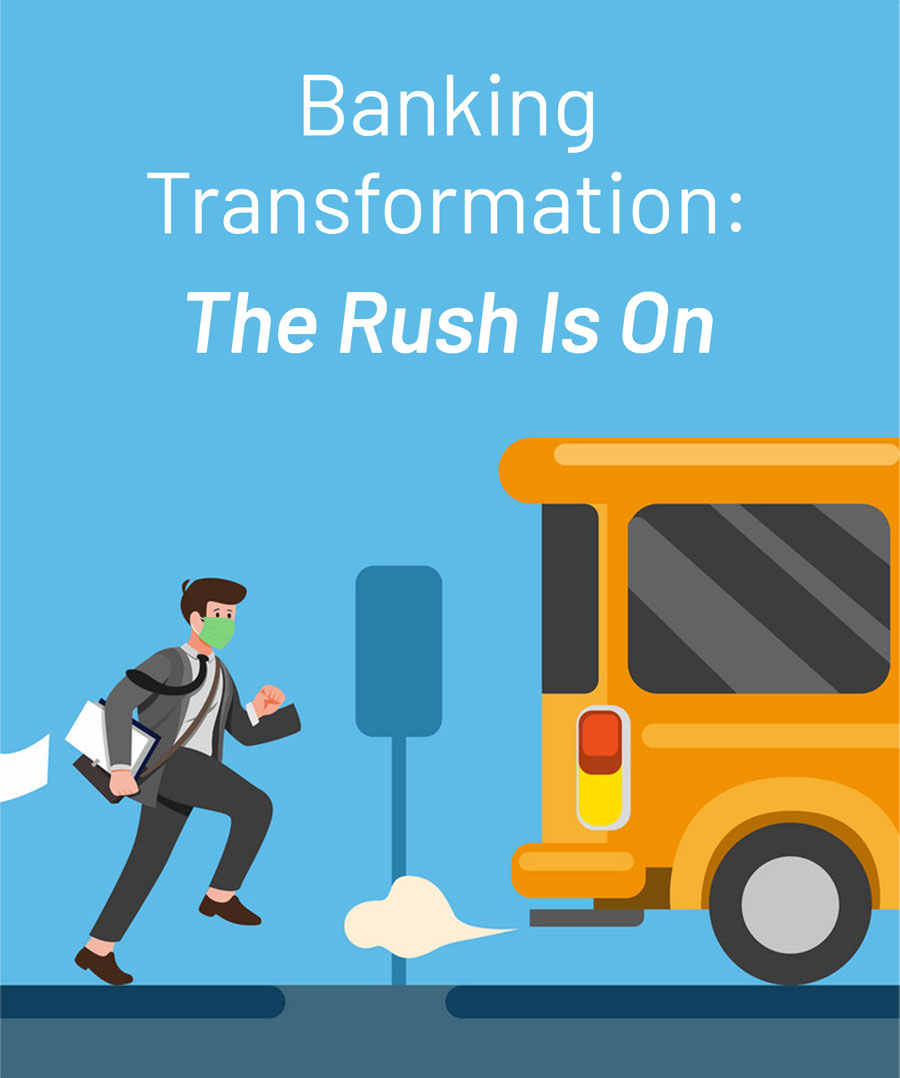


Bank customers have been surprisingly patient with digital laggards. Covid is changing all that
Even as Europe and the US combat a Covid-19 second wave, attention has already turned to what a post-Covid consumer world will look like. While everyone talks of a mega-shift in trends, here are some stunning stats to back up the rhetoric:
- US e-commerce retail sales for 2020 is set to grow by over 30% (source: e-marketer, Oct 2020)
- Amazon’s marketplace sellers averaged US$ 160K in the year ending May 2020, compared to US$ 100K for the same period last year
- Nasdaq’s YTD rise is three times that of the S&P 500

But nowhere are the choices more stark than in the banking sector:
- First time users comprised a third of total users of US digital banking channels (source: McKinsey, May 2020)
- Growth of digital banking demand in the first few months of Covid would have otherwise taken 5 years to accomplish (source: McKinsey interview with Piyush Gupta, DBS CEO, Sep 2020)
- 79% of banking executives say there is a need to re-engineer customer experiences post-Covid (source: Accenture, Sep 2020)
- S&P Banks Select Industry Index YTD is down over 20% vs the S&P 500 which is up 10%.
As with the growing intolerance of financial hardships caused by Covid lockdowns, so too is there a growing impatience with digital laggards. Retailers slow to embrace digitization have discovered this to their cost, with household global names like GNC, JC Penney, Neiman Marcus all filing for bankruptcy this year.
But this is very much the tip of the iceberg. Unprecedented fiscal and monetary programs launched by developed countries have helped prop up important economic sectors such as banking. These will soon expire, and according to the Bank for International Settlements (BIS), we can expect 20% more bankruptcies in these countries in 2021 vs 2019.
Banks are particularly vulnerable. Despite starting the crisis with healthy capital levels, equity valuations within this sector have fallen behind the recovery seen in the general economy by as much as a third. It is now clear that banks no longer have the 3 to 5-year digital transformation timeframes that were once thought reasonable.
Instead, banks are likely to be penalised for gaps in their digital abilities, if not already, then certainly over the coming months. This is because many banks are already being forced to scale back their lending businesses amid the downturn in individual and corporate credit quality and increased loan drawdowns. Net interest margins will also be increasingly compressed.
To compensate for this, banks must speed up their ability to do two things – meet demands for new and enhanced consumer services, and implement cost cutting efficiencies. Cloud-based new technologies and Software as a Service (SaaS) models have been identified as a key solution. According to a World Economic Forum (WEF) Covid Action Platform survey, 84% of respondents cite this as transformative for post-Covid banking.
However, staying afloat is not enough. Like retailing, the post-Covid banking world will be marked by big winners and losers, and it is necessary to change the game altogether. For this, 77% of respondents point to artificial intelligence in its many forms. AI is no longer seen simply as a means to improve customer experiences, but is increasingly a tool to support backend functions, including fraud detection and reporting.
Another significant agreement unveiled by the WEF survey is the need to revolutionize banking business models. More than 80% of survey respondents believe that banking will encompass an ecosystem of digital services. These services will extend beyond their channel of delivery ie branch vs online vs mobile, to focus more on their value and fit with consumers’ everyday lives.
The World Banking Report 2020 found that a fully digital bank stands to gain a two times improvement to acquisition and distributions costs and efficiency ratios. What the Covid crisis highlights is that banks do not have the luxury of years for these improvements to materialize.

